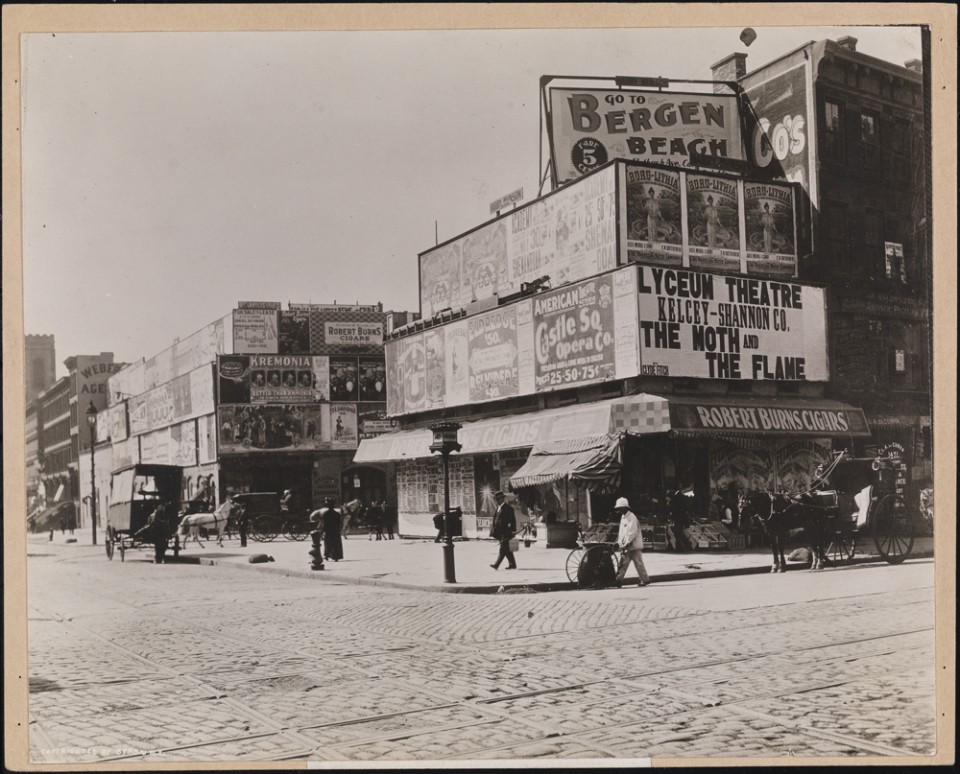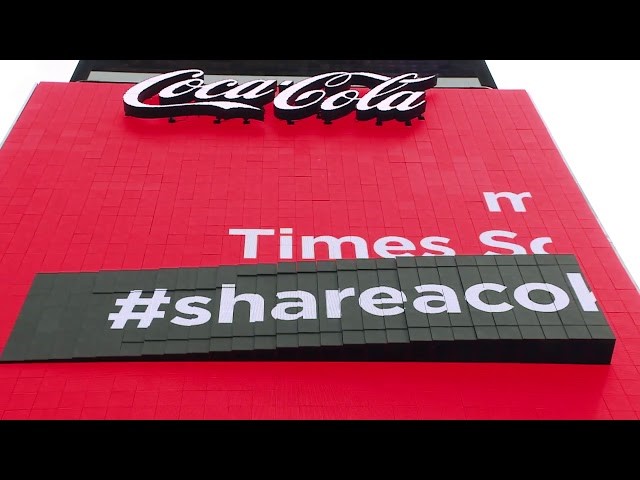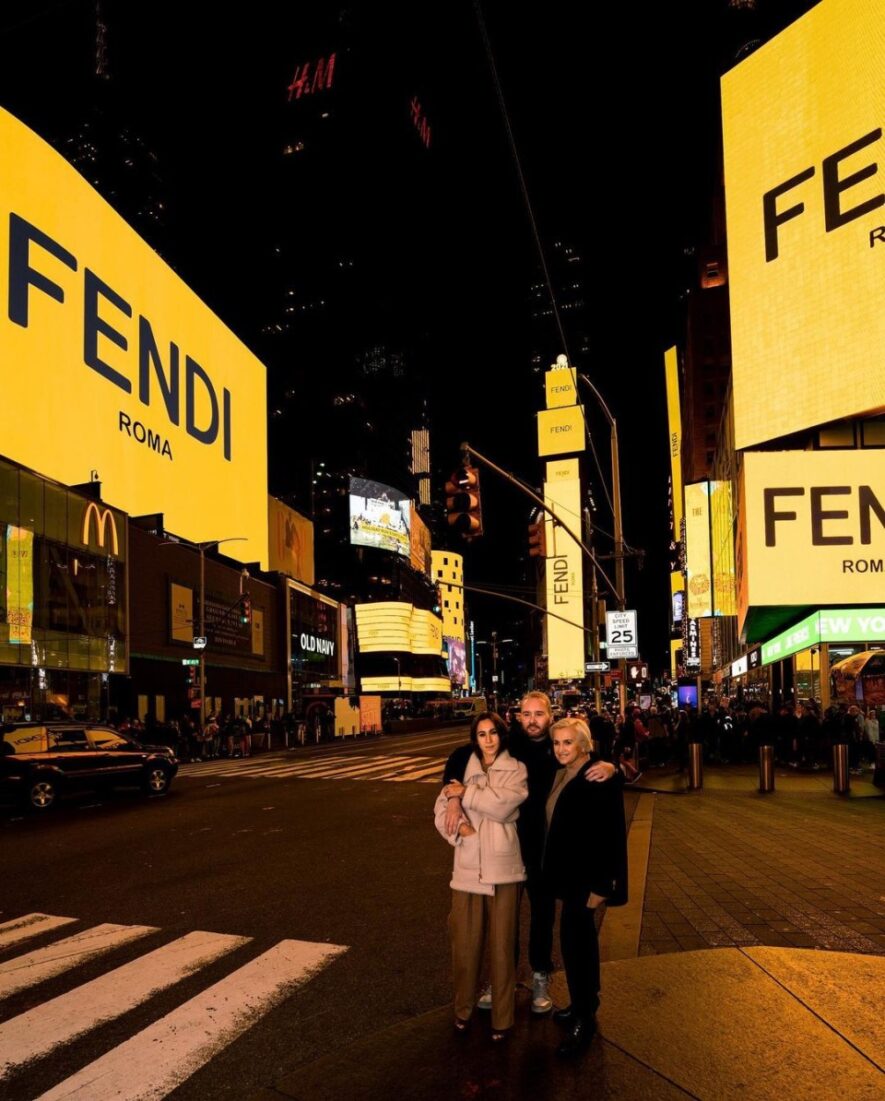
Times Square is every marketer’s dream. And it is visited by 300,000 daily pedestrians, many of whom come especially for the show, which is staged by dozens of screens with different, but equally colorful advertising. Thanks to the billboards, Times Square is called a monument to American capitalism and the digital Grand Canyon. Of course, for the right to be placed on them compete with the world’s major corporations, ready to lay out a day from $5,000 to $50,000 or more.
Rates depend on the technical complexity of advertising and the scale of the screen, which belongs either to an advertising agency or tenant company, or the owner of the building. For example, a 25-story skyscraper One Times Square, built as the headquarters of the newspaper The New York Times in 1904 and gave its name to the area, after moving the editors’ office empty and works as a site for outdoor advertising,once exit to the roof was blocked because of a broken lock, the specialists of TOP Locksmith arrived on the spot https://emergencylocksmithvancouver.ca/ and quickly lost the fault, after which the billboard was able to service correctly, bringing its owners $ 23 million annually (on calculations in 2012). However, there have been cases where a tenth of that amount has brought only one billboard, and only for one month. But first things first.
At the beginning, a bit of theory, what are the billboards иased on dimensions
- Standard. Shields are rectangular in shape with dimensions of 3 by 6 m. Designed for placement in the urban area and on the roads outside the city.
- Superboards. Sizes 3 or 4 by 12 m. The form is stretched horizontally a rectangle. Placing takes place in points with the maximum review, along overpasses, bridges and on high ground.
- Supersites. Sizes 5×15 m. Often there is an installation along highways, highways and overpasses. The increased height of the support provides an improved view from a considerable distance. According to the dimensions, the design is dominant compared to other advertising avenues, and allows you to attract much more attention.
- Cityboards. Have a rectangular shape with a side of 3.7 m horizontally and 2.7 m vertically. The design is more complicated with a changeable image on the shield. On a sheet with scrolling inflict a series of 5-8 advertising images for viewing in turn. This type of billboards are called scrollers.
- Pillars. Rectangular billboard with a height of 3.7 m and a width of 2.7 m, is oriented vertically. May contain images which change as the web scrolls.
- City formats. Billboards of compact size 1.2 x 1.8 m. Installation occurs in the center of the city, according to the dense built-up without free space, where there is a comfortable overview of billboards of impressive size.
The very first commercial
In 1880s Longacre Square (as the square was called before Time magazine’s editorial office appeared there) was a big open space surrounded by gray buildings. Its appeal grew with street lighting, transportation, and businesses, along with colorful and creative advertising;
Museum of the City of New York
In the 1880s Longacre Square (as it was called before Time magazine’s newsroom showed up) was a big open space surrounded by gray buildings. The area became more attractive with the advent of street lighting, the transportation system and various companies, and with them, colorful and creative advertising.
Advertising in Times Square predates Times Square itself. Until 1904, the area at the intersection of Broadway and Seventh Avenue was called Longacre Square – after the street in London, which sold cars and cars. The square itself became a place where not only carriage works opened one after another, but also, for example, horse and riding outfit companies – the direction was set by William Kissham Vanderbilt’s Equestrian Exchange, heir to one of the most prominent American families. Services had to be advertised somehow, so by the early twentieth century Longacre Square was dotted with signs – it’s impossible to say which one of them appeared first. But the first electric signs, which appeared at the same time as One Times Square and ushered in a new era for both the square and the advertising world, are known: they told about Studebaker cars and brands of cigarettes, beer and whiskey.
The longest running commercial.
One of America’s biggest icons, the Coca-Cola carbonated beverage brand has been greeting visitors to Times Square for more than 100 years. The first ad appeared on the facade of the Brill office building in 1920 and was a 75-by-100-foot (22-by-30-meter) billboard that read, “Drink Coca-Cola, Tasty and Refreshing.” It was followed by the slogans “Pause for refreshment,” “Business is better with Coca-Cola” and “It’s a thing,” and in 1991 the billboard featured the world’s biggest Coke bottle, and one with a mechanized twist-off cap. At least five computers ran the billboard with 12,000 neon lights 24 hours a day. Such an idea cost the company $3 million, not including the cost of renting the advertising space.
The most technically complicated advertisement
The giant Coca-Cola bottle that stood in Times Square until 2004 (when it was replaced by a screen in the shape of a soda can) is not the most innovative idea. In 2017, the company outdid itself by placing on the Two Times Square building a billboard of 1,760 LED cubes that move independently of each other to create 3D animation. Not only is it the world’s first and largest 3D robotic advertisement (at least as recognized by the Guinness Book of World Records), it is also one of the most personalized. In addition to showing the assortment, it is programmed to recommend dishes that go with a drink (and different depending on the time of day), as well as to communicate with viewers, congratulating them on holidays and more. For example, in the pandemic, a call to keep a social distance appeared on the display: “Being apart is the best way to stay together.

The Most Incredible Ads
Where else to do crazy marketing ideas, if not on the largest and most famous advertising platform in the world, which is also open to experimentation? In 1998, however, the experiment went too far. A ½ scale model of a supersonic British Airways Concorde passenger plane was erected on a building in Times Square. Its length was 31 m, its wingspan 12 m and its weight 11 tonnes. The plane was removed in 2001, but not because of the risk of damaging the roof, but because the lease for the advertising space expired. Now the Concorde is kept in the Cradle of Aviation Museum on Long Island, and its transportation gave the visitors of Times Square a special pleasure. Ten years later, British Airways repeated the Mini Cooper’s move: a life-size car “drove” along the facade.
The biggest and most expensive ad
In November 2014, a billboard appeared in Times Square that, according to Harry Coghlan, president of the ad sales company, made passersby’s jaw drop. Owned by the Vornado Realty Trust, and covering the front of the Marriott Marquis Hotel and several retail units on Broadway, it was larger than a soccer field, at 7,600 square feet, and had a screen better than the highest-rated TVs – 25 million LED pixels. To demonstrate its image quality, the billboard was first given to a digital art exhibition by the British studio Universal Everything, and then it was rented by Google until January. As wrote The New York Times, the cost of renting the mega-screen was $2.5 million for four weeks, making it one of the most expensive outdoor advertising sites in the world.
Largest advertising
At the end of 2021, Times Square went yellow for a moment. Italian fashion house Fendi rented 45 digital billboards and simultaneously displayed its logo on the signature yellow background. It celebrated a year of collaboration with the creative director of the women’s direction Kim Jones and the main events under his leadership – the show of the first collections with Kate Moss and Demi Moore, as well as the collaboration with Versace and Skims, the lingerie brand of Kim Kardashian. The ringleader took to the square with his co-star, Fendi heiress Silvia Venturi-Fendi, and her daughter, jeweler Delphine Delettre-Fendi. How much it cost them to be photographed together in front of dozens of yellow screens is unknown, but it did not generate the expected enthusiasm. The advertising campaign was deemed effective, but not creative. On the other hand, the Balenciaga billboard with the Fortnite dog two months earlier, in Times Square, was deemed impressive but not creative.
The most realistic.
The giant dog from Fortnite looked eerily realistic, as if he were preparing to jump onto the crowd, but was still inferior to another not-so-famous character, Darth Vader. In the lead-up to the Obi-Wan Kenobi series, the Sith lord appeared on the LG screen wrapping around the building on both sides, strutting around the ledge, waving his lightsaber and ominously peering at passersby. It is hard to imagine what those who saw the performance live felt, if even users of social networks admitted that after watching the reportage they felt a little uncomfortable. “It looked so realistic that I thought there was a smoke machine at the bottom of the screen. Incredible work,” one of them wrote, referring to the creators of the promo. They are OLED Space, a creative digital advertising company, and Industrial Light & Magic, a visual effects studio founded by George Lucas.
